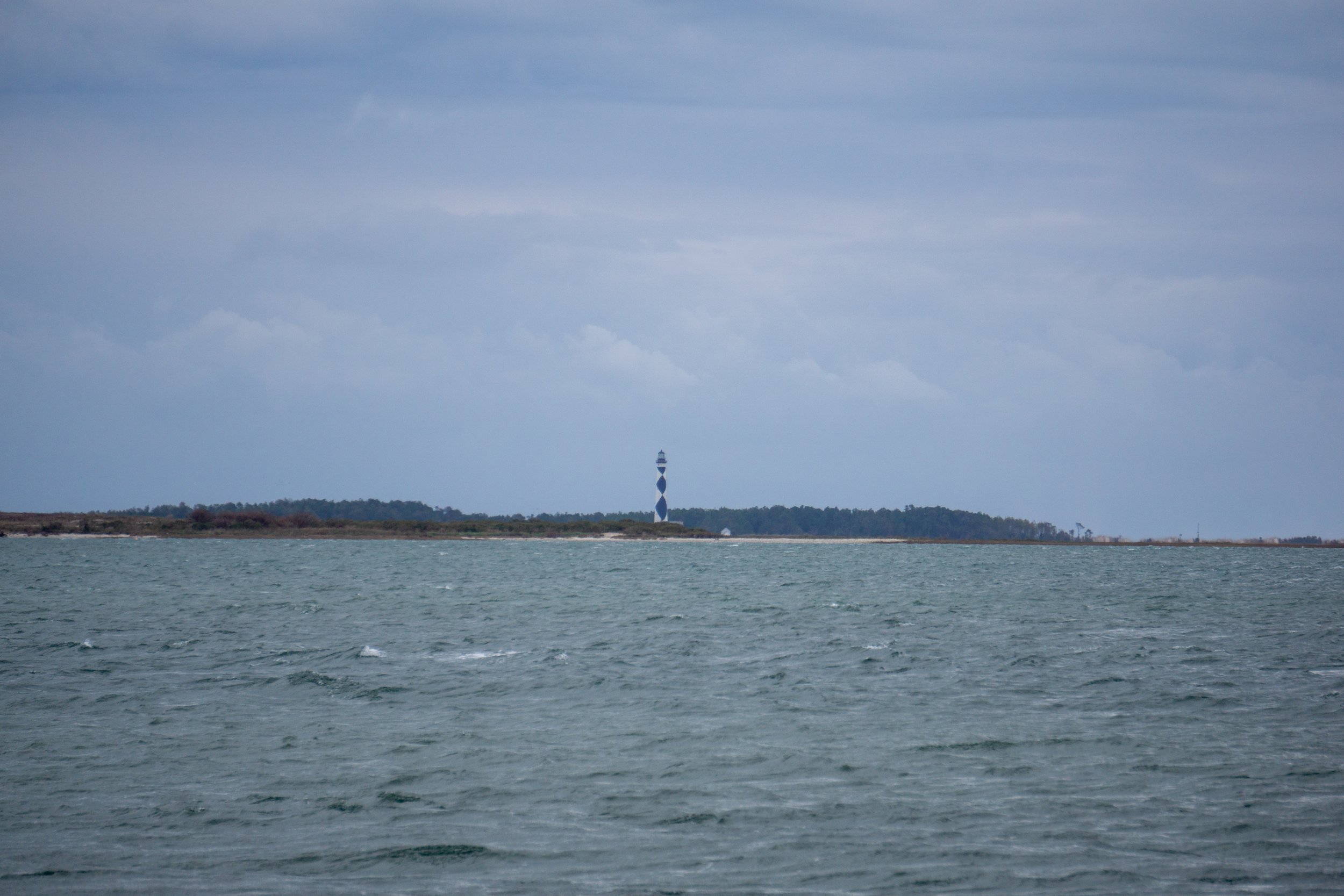Dispatches From the Parks: Cape Lookout National Seashore
On a windy but overcast day I made a long trek by car to arguably North Carolina’s most remote national park site: Cape Lookout National Seashore. Cape Lookout is technically part of the same set of barrier islands as the more popular Cape Hatteras. However, Cape Lookout offers a more naturally intact environment as its erosion is natural compared to the more human induced and much more striking erosion that takes place at Cape Hatteras. Nevertheless, you will find a very similar experience at both parks.
As I got into the parking lot at Harkers Island (the park’s major footprint on the mainland) I noticed how quiet the place was. There was only one other car parked in the expansive lot, and my only company within the immediate area was a gaggle of Canadian geese that seemed perturbed by my presence there. The odd setting made me decide to do the park’s trail first instead of the visitor center that the geese seemed to be guarding. The Southside Trail to Willow Pond is a short but sweet trail. It goes through multiple environments including maritime forests and windswept views of the surrounding islands. Those windswept views also offer surprisingly good glimpses of the park’s lighthouse, which is built exactly like the three famous ones in Cape Hatteras National Seashore. The first half of the trail abuts a lot of private property, which offers a weird visual palette when you can look one way and see housing and RVs and then look the other way to see the ocean hitting against the shoreline. In the second half of the trail, the going gets harder as you get deeper into the maritime forest and social trails spring out of nowhere. It’s difficult not to take the wrong one. If you find the correct way, though, you end up at a birding museum and a pond. Surprisingly, I didn’t see much birdlife. I only noticed a couple of kinglets. That’s despite the park making this a paradise for birders including one of the best bird blinds I’ve ever seen looking over the pond.
The trail eventually circles back around to the visitor center, which I finally entered. It’s a rather large visitor center, but most of it is behind the scenes rooms (probably for scientific studies). The visitor facing stuff is kind of basic, with one exception. The center has two main exhibits. One is an outdated exhibit explaining what you will experience in each of the different sections of the park. The second exhibit is a cool interactive exhibit on the wildlife you may see in the park that includes a touch tank. The main highlight at the visitor center, though, is the park video. Most park videos are outdated with cheesy actors and cheap sets. This video, titled Ribbon of Sand, was so good it probably should have been submitted for Oscar consideration. Partially narrated by Meryl Steep, the video provides stunning scenes that come across as reminiscent of The Tree of Life with its wistful and introspective look on life in the park.
I unfortunately only had time to explore the mainland district of the park, but you can also take a ferry to the three islands within the park. The ferry looked kind of small and cheap, but the islands look so close that you feel like on a good day you could swim to them. That being said, exploring the mainland is good enough to get an enjoyable day out of this park.




